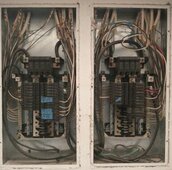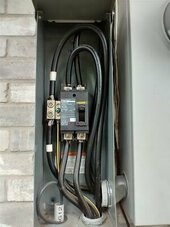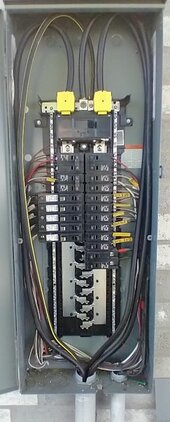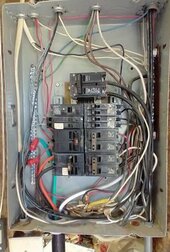No surprise that four wires show up in the 200a main panel. Is the beginning neutral-ground connection sufficient or should it join the house panel's ground.
Neutral and Ground should bond together at exactly one place, that first disconnect.
(or rather, what I'm seeing always happen is two places, one at the meter itself, because center wire connects to meter socket, and again at the first disconnect - often by a green screw through neutral/ground busbar to box.
Do not join neutral to ground anywhere else.
Reading here about multiple grounds are potential problems. With the 100a panel fed from the 200a main, should I connect the 100a ground to the 200a panel's ground connection?
Yes, feed 4 wires through keep the isolated from each other. L1, N, L2, G.
The G wire needs to bond to all pipes, also foundation steel if accessible, at each building. Bond hot, cold, and gas if applicable at water heater.
Although some people don't like it, each building with multiple circuits (not just one wire run from house to an outlet in a shed) is to have a ground rod.
And personally, I don't care if ground forms "loops", like two circuits both have ground wires going to electrical boxes that end up bonded together, e.g. furnace fan and AC. "Ground loops" is mostly a bugaboo for analog circuit designers and audiophiles (and SEM guys like me.) Anywhere else, I consider the redundant safety connections.






